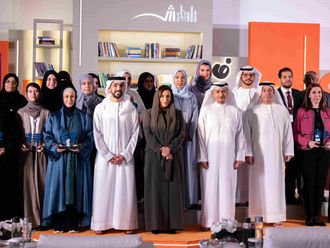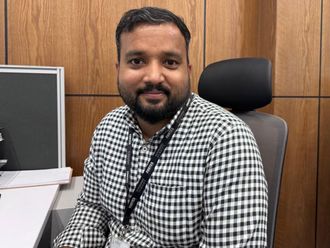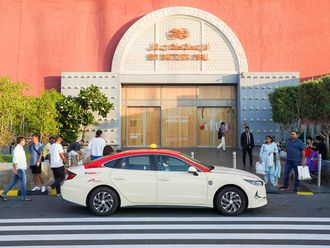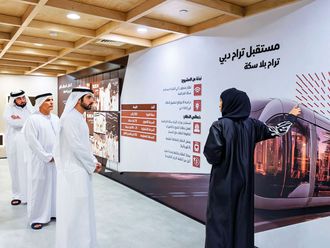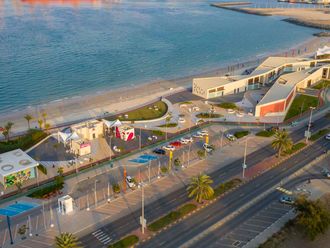James Cameron's latest release Avatar has made online virtual worlds such as Second Life (SL) more popular than ever as audiences sit up and take notice of the possibilities of these sites. Users are currently using these sites to socialise and connect using free voice and text chat through personalised avatars or computerised self-representations.
However, these sites also hold out the possibility to become places where educators are discovering academic possibilities.
SL, for example, provides virtual homes for some of the world's most prestigious universities such as Harvard and Stanford who have bought virtual land with Linden Dollars.
Although this seems to be somewhat of a trend in the West it has yet to catch on in the Middle East. Campus Notes spoke to educators in the UAE to gauge how long it will take before students take their seats in a virtual classroom.
Doing his own thing
Dr Brad Young is an information technology (IT) professor at Zayed University and is among the first in the country to catch on to the possibilities of teaching in virtual reality. Using OpenSimulator, often called OpenSim, Young teaches his students about the basics of 3D concepts and the principles of server building within a virtual world.
OpenSim is an open source server platform that hosts virtual worlds and can be accessed by multiple protocols. This means it is free software created for everyone to use.
"SL is fundamentally a commercial enterprise," said Young. "And education is a vehicle for their commercial activities which is probably why many universities have set up virtual campuses there."
About a year ago he realised the benefits of using a virtual environment for teaching and introduced nearly 55 students in his graphics and networking classes to the concepts of creating 3D objects within such environments as well as creating an entire virtual grid or world.
Making learning fun
"There are lots of techy things I can do with them," said Young. "I came up with the idea as a way to connect with students who are familiar with 3D environments." He said students enjoy controlling their own avatars which is interesting to watch. "When they modify their online presence they come up with some unique presentations," he said.
Although run on the university's local intranet network, Young can allow select off-campus access. Currently his students only dabble in the virtual world at the most for six weeks of the year, which is hardly a major shift to virtual lecture halls. "This is just a tool and like anything else you can teach poorly or you can teach well with it," he said. "It is never about the technology anyway."
Bits and pieces
Dr Khalid Khawaja, chair of the IT department at the American University in Dubai (AUD), said although the use of tools such as SL and OpenSim are seeing some light, they are primarily used for students to understand the technology. "We use these tools for students to understand the concepts," he said.
Khawaja said a computing concept like programming requires an interest in maths and science, which not many students have anymore. "Yet a program called Alice allows students to learn programming through virtual worlds," he said. Instead of taking a traditional approach to programming the department taught the principles of the topic through virtual means for the first time this semester. He said although the university has yet to set up a campus in a virtual world, the IT department is utilising "bits and pieces" of it for learning.
Simulating reality
Khawaja said evidently virtual worlds make the learning environment more exciting and could become a normal part of university life in the near future. "It could be a matter of a couple of years where components of classes are happening in virtual environments like this," he said.
One major benefit of teaching in virtual reality is the ability to simulate real-world situations in order for students to practise real life principles.
"As educators we are always looking for ways of making information realistic," he said. "But we don't always have the resources to simulate actual situations for our students." Yet with technologies such as SL these concepts are now very much feasible.
Virtual teaching
Dr Eli Abi Rached, director of the Eton Institute of Languages and education specialist, equates virtual worlds to Dubai. "SL has become a portal for new identities and is much like Dubai," he said. "People come here to reinvent themselves, to become something new and to explore something new." According to him, this is exactly like Dubai because people can be whoever they want whenever they want.
Eton Institute has already dabbled in teaching through various mediums, recently offering Arabic language classes through Twitter. Yet it proved unsuccessful as Abi Rached found people preferred attending real classes. "There are other things that offer instant gratification besides that [learning via Twitter]."
Abi Rached said the institute also bought the "land" for its virtual campus on SL almost six months ago and it is currently in the design stage. "Yet we found one of the biggest challenges is having the right hardware for it to run."
He said the average internet speed most people have in the UAE is not good enough for SL. This is not a major setback because bandwidth can always be upgraded.
"However a bigger problem is most computers don't support SL or if they do it's to a minimum," he said. He went on to explain how the institute's 30 new computers could barely run the website.
Futuristic technology
Research reveals a university's physical location has already decreased in significance. The Swiss Virtual University, The Virtual University of Pakistan and the United Nations Educational Scientific and Cultural Organisation (UNESCO) Virtual University are but a few examples successfully following the virtual concept the findings of a University of Worcester paper states.
The paper titled The Virtual University and Avatar Technology: E-learning through future technology said one of the benefits of virtual learning is the ability for instructors to create virtual tutors, available around the clock, offering students a more flexible schedule.
Another benefit to using avatar and 3D technology is the potential savings. By combining face-to-face training with computer-based training institutes one can save money on human trainers and faculty and yet keep the human touch.
Although it has been successfully used in higher education environments, virtual reality is still considered a relatively new way of teaching and learning within academia. The University of Worcester paper mentions the benefits of using virtual reality technology as an educational tool for researching about certain topics such as medicine. One study revealed medical students' immersion into virtual reality had a positive impact as they found it a powerful way for teaching and training on doctor-patient interactions using gestures and speech with the avatars.
DWC researches virtual world problems
If you have been in a virtual world like Second Life, you will know how disconcerting it is when avatars who are strangers get in close proximity to you even though it's not real life.
It seems that people are as finicky about their personal space, when they immerse themselves in collaborative virtual environments (CVEs) as avatars, as they are in the real world a lecturer at Dubai Women's College has found.
Nasser Nassiri, chair of the IT department at Dubai Women's College (DWC), and academics from the University of Manchester and Leeds Metropolitan University have delved into a new research arena to look at how people perceive personal space as avatars.
They recently presented a paper, Enhancing Human-Computer Interaction in Collaborative Virtual Environments, at the Current Trends in Information Technology conference at DWC.
Personal space, the invisible ‘bubble' that people carry around themselves and get anxious when it is ‘invaded', functions as a comfort zone during communication in the physical world.
The researchers have suggested that avatars be designed with bubbles around them to prevent accidental or deliberate personal space invasion by strangers.
"Researchers cannot figure out why we are doing this [maintaining personal space] and why it is happening in virtual worlds because there is no harm to the person," said Nassiri. "Just like real life, people are scared to talk to strangers."



